 This post is sponsored by Hauptli Haus, makers of nüscheli baby scarves.
This post is sponsored by Hauptli Haus, makers of nüscheli baby scarves.
If you’ve never heard of a nüscheli, trust that you’re not entirely alone. Until recently, I was myself uninitiated. Maybe more to the point, so were my kids. Nüscheli, a Swiss German word which roughly translates to lovey or blankie in English, is the word used to describe Swiss baby scarves—simple cotton squares folded into triangles and tied under chubby baby chins.The scarves are a standard baby item in Switzerland and Austria, common enough that you can find the colorful square cloths in grocery store aisles, “next to the diapers and pacifiers,” explains Stephanie Hauptli, who designed her own line of nüscheli for her eponymous line Hauptli Haus. 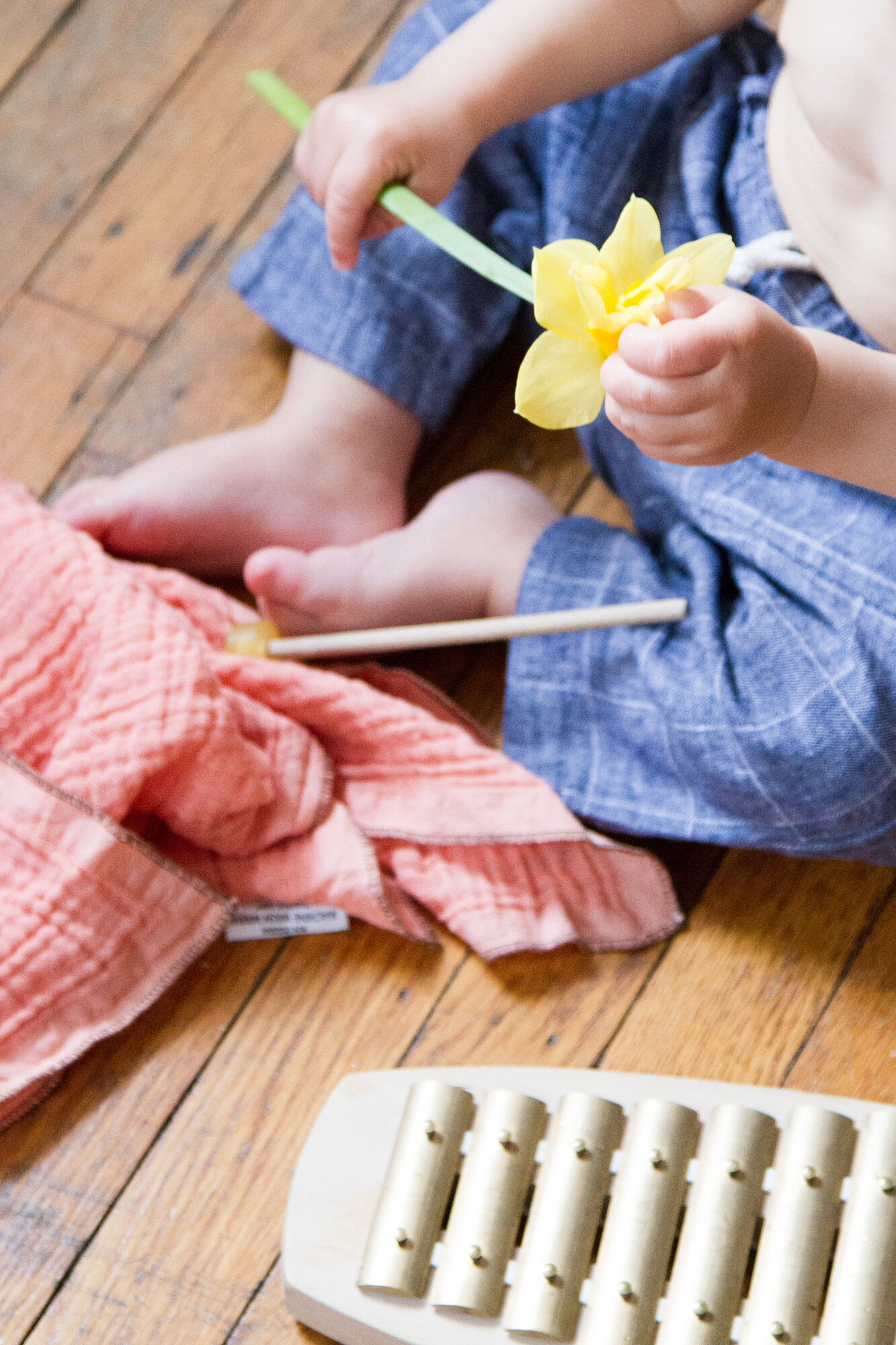
More than only being a fashion accessory, the scarves are used for all manner of everyday baby (and household!) needs. A nüscheli might start the day as a scarf, save the morning as a burp cloth, transition into an afternoon on bib duty, and moonlight as a washcloth before getting tossed in the wash and put back to use again the next day.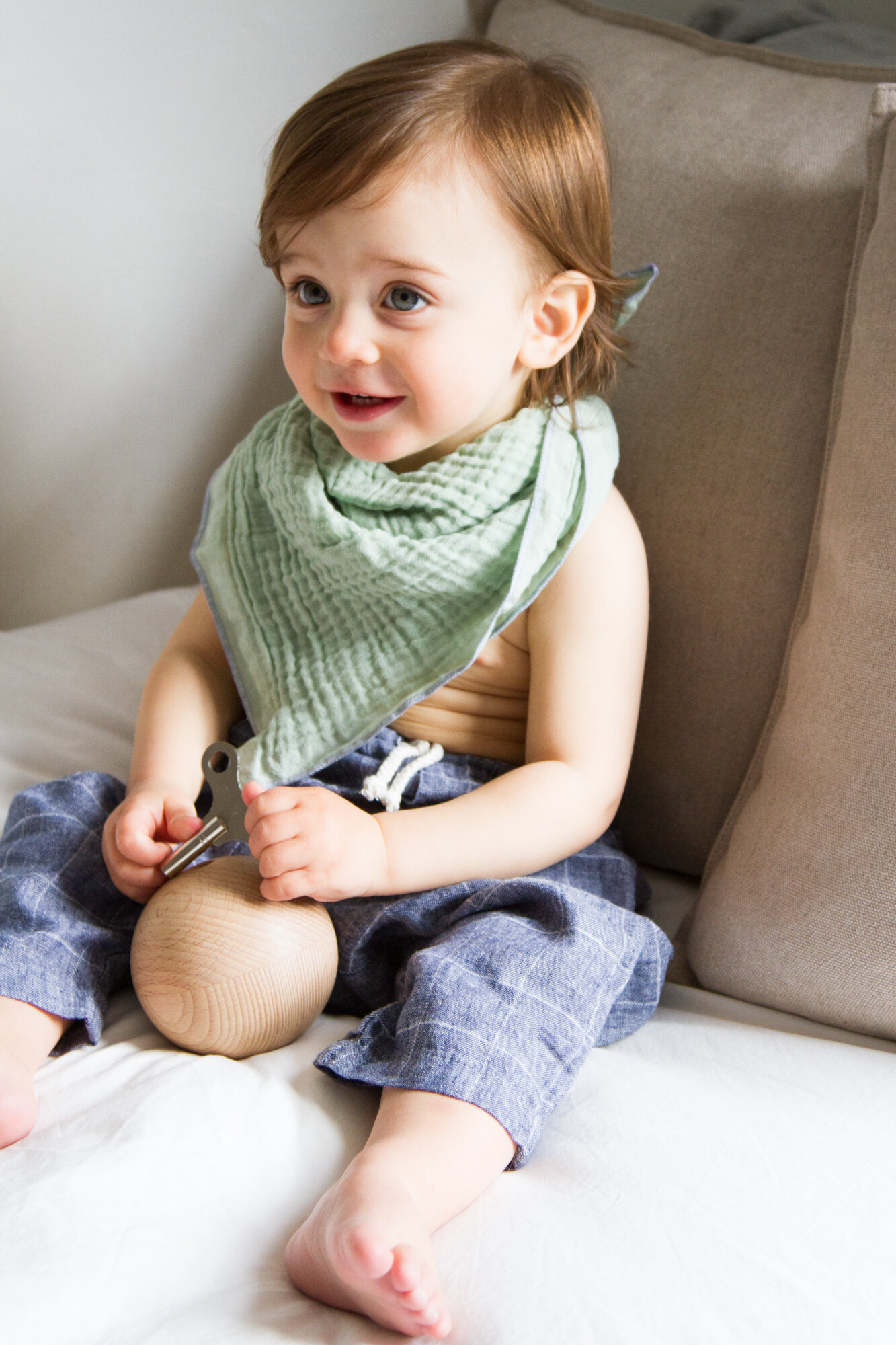
Stephanie keeps a stack of eight or ten on hand in her house for putting to use with her two kids. As babies grow into toddlers, the scarves become accessories for imaginative play. A clean nüscheli can even be used to wrap cookies for toting to a playdate, or to wrap a birthday present furoshiki-style. 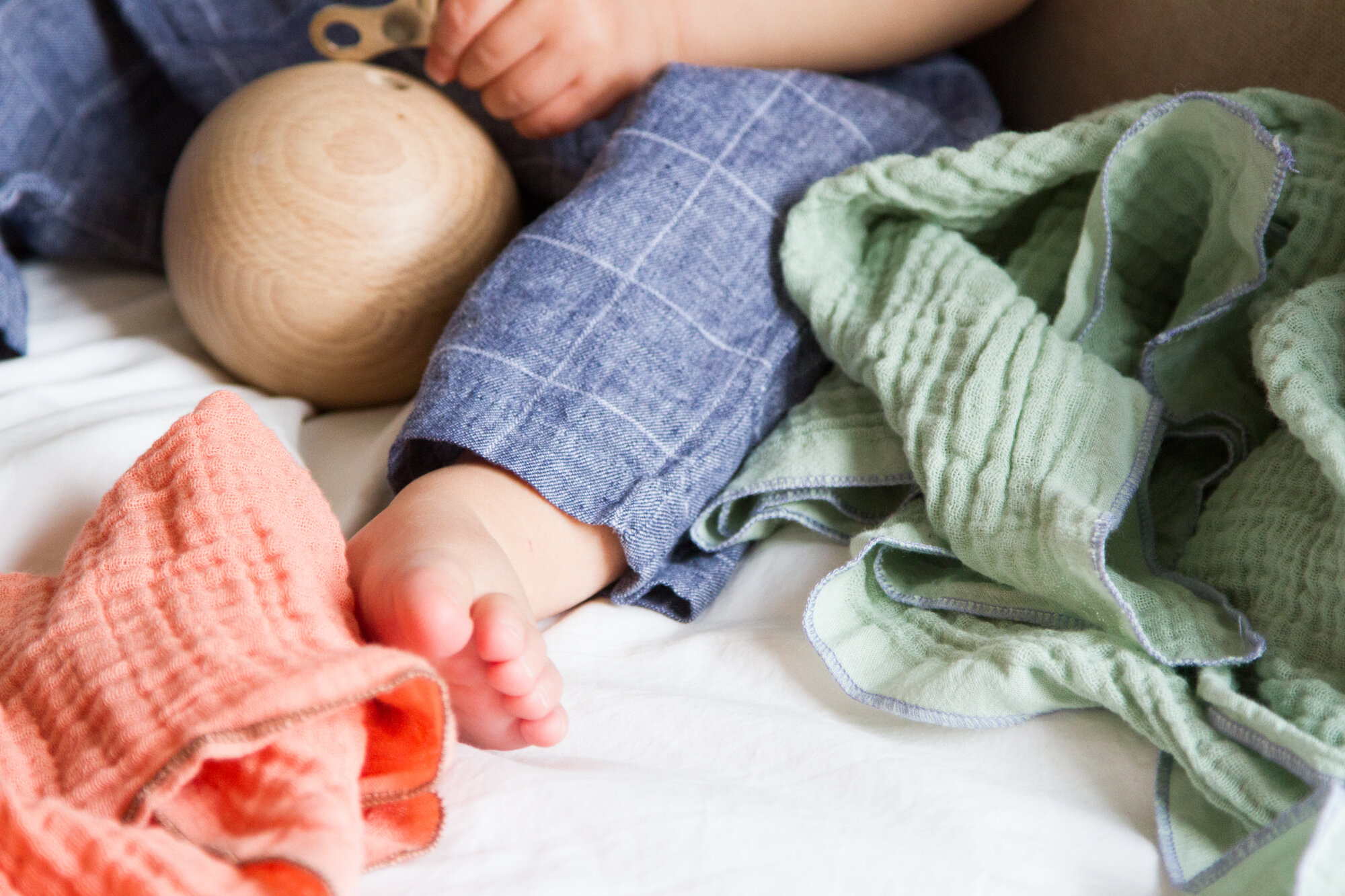
In the case of Hauptli Haus nüscheli in particular, the scarves have been thoughtfully designed with environmental stewardship in mind. As a child of Swiss and American parents, Stephanie grew up in Switzerland and France, before going on an adventure to her mother’s native California at 19, and deciding to stay. When her first child was born in California three years ago, Stephanie realized she wasn’t able to find nüscheli in the United States. So, on a trip to visit her parents, she bought a stack of Swiss nüscheli and brought them back with her. Then she figured out a way to improve upon them.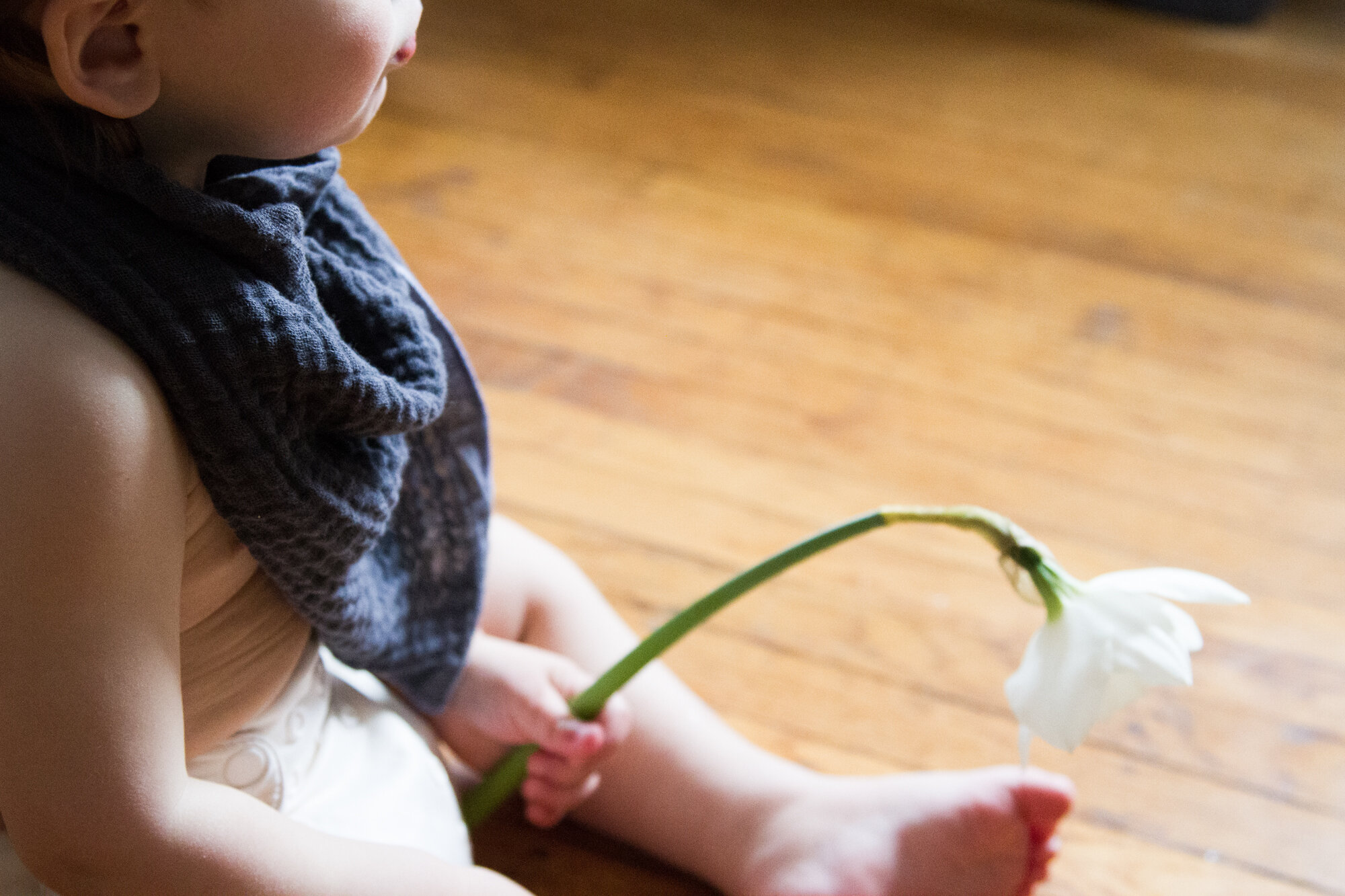
As an architect and designer by trade, Stephanie wanted to commission scarves made to her own taste and specifications—which is to say, scarves with an understated color palette and born from responsible manufacturing. 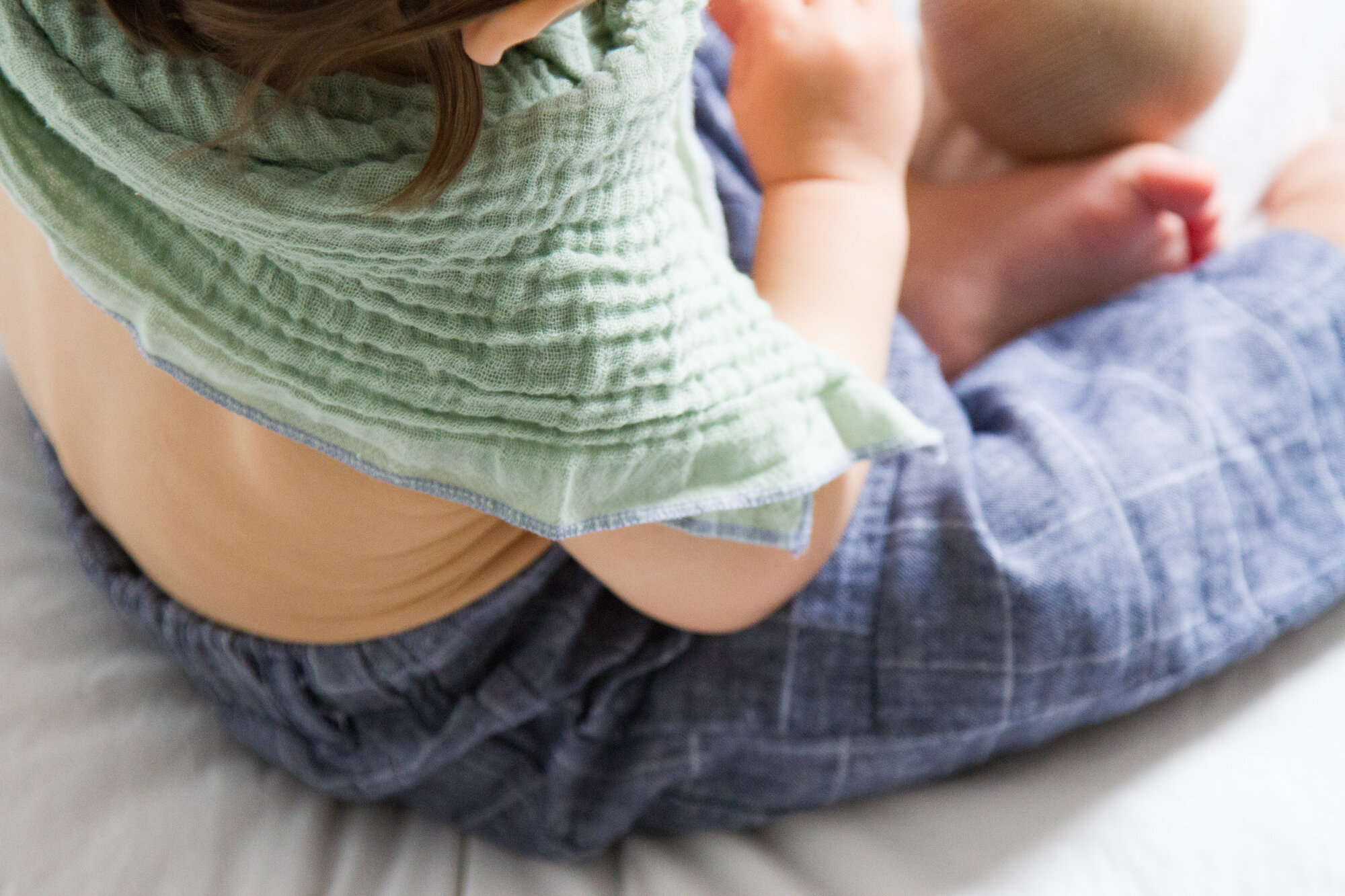
Stephanie works with a 200-year-old family-run Swiss mill to make fair-trade organic cotton scarves, from cotton milled, dyed, and woven for Hauptli Haus specifically. As a result, Hauptli Haus scarves are the first baby product to receive the gold rating from the Cradle to Cradle Products Innovation Institute, a non-profit organization that measures consumer products against intense sustainability criteria in five areas: material health, material reutilization, renewable energy & carbon management, water stewardship, and social fairness.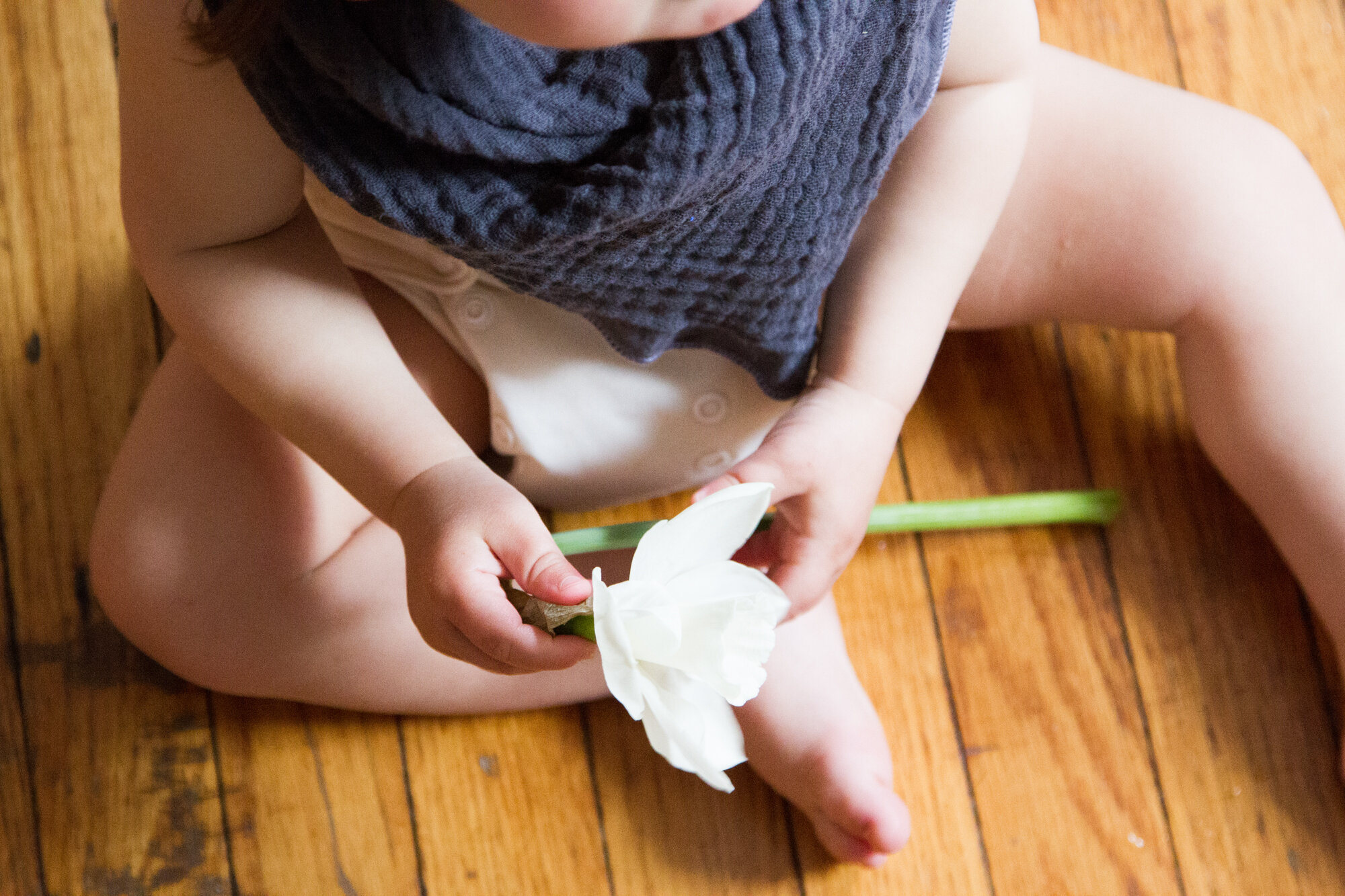
After a Hauptli Haus nüscheli meets the end of its useful life, the biodegradable scarf can be cut up into pieces and composted.
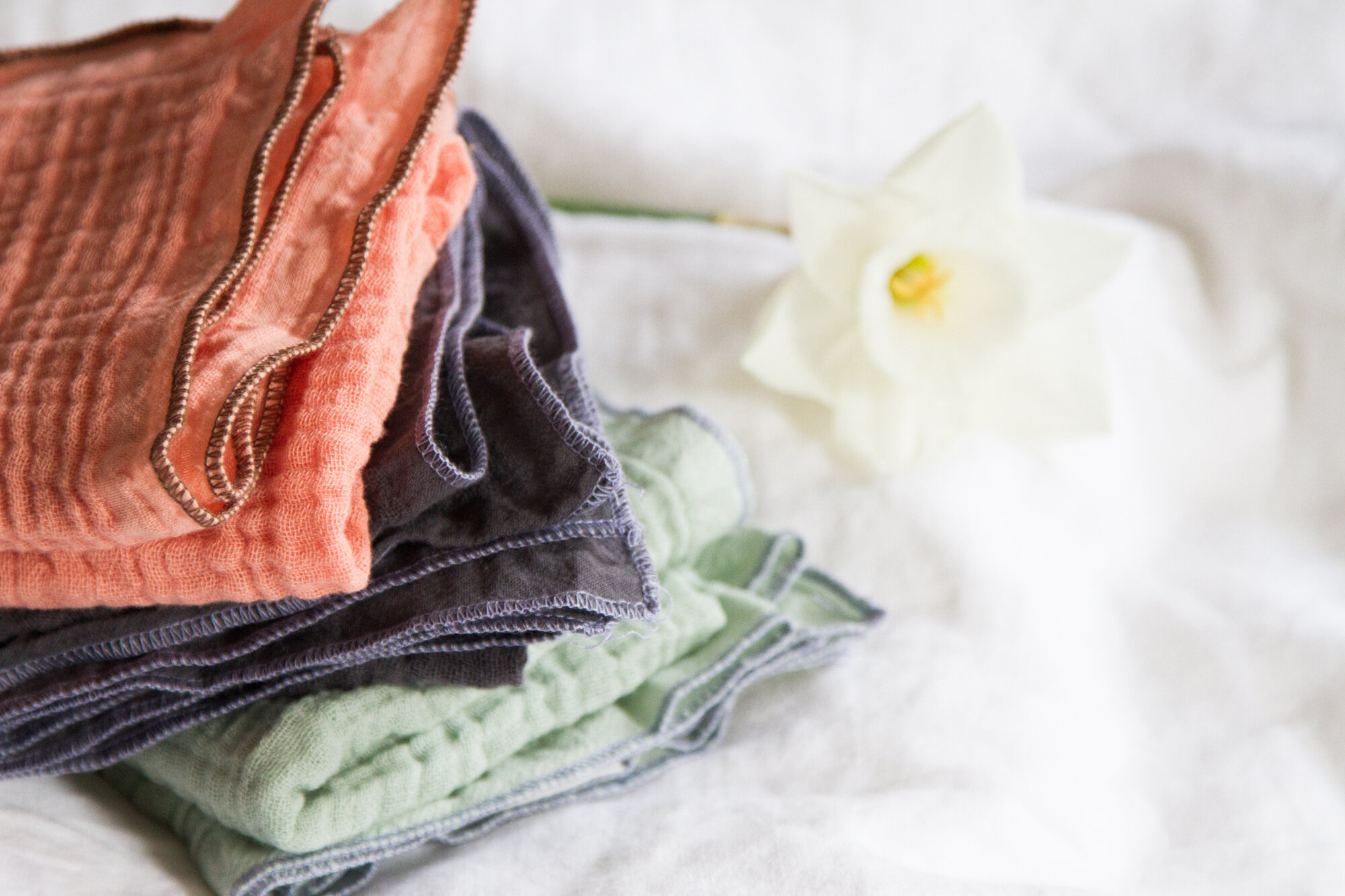
As for me, I’m glad to have welcomed a few nüscheli into our own rotation and I’ve found them to be particularly helpful while packing our bag for a day out of the house. Tucking one or two into our diaper bag means that we always have a scarf, or a tissue, or a bib to use while we’re out of the house. Also, they’re adorable.
What about you? Any nüscheli enthusiasts out there?
If you’d like to try them for yourself, you can use the code READINGTEALEAVES to get 20% off all Hauptli Haus orders now through April 30, 2018.
This post was sponsored by Hauptli Haus Kids. All opinions are my own. Thanks for supporting the brands that support Reading My Tea Leaves.

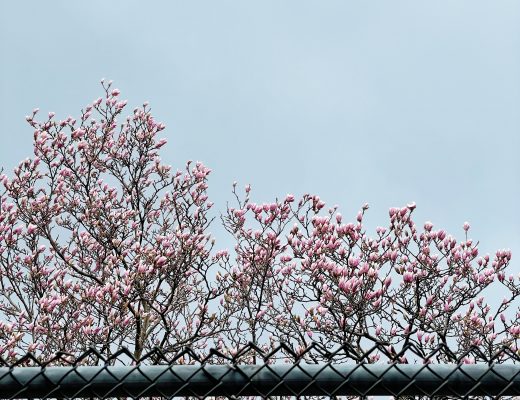
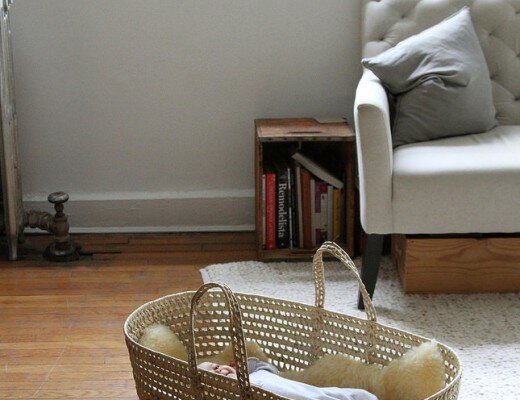
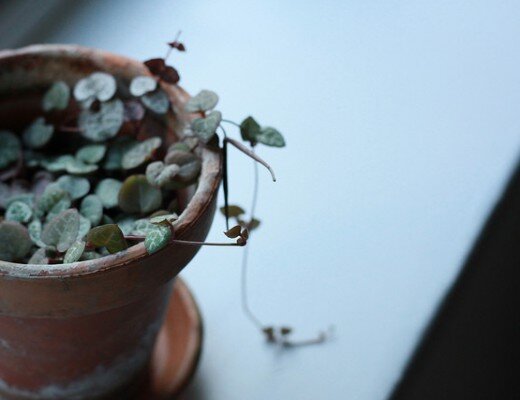
17 Comments
Oh I love to see this! I am Swiss French and my husband Swiss German, so yes we know nüschelis! « Unfortunately » our 2yr old has never spitted up much, and is generally surprinsingly clean so we barely use nüschelis but it is one of the first things I bought when I was pregnant.
So fascinating! I love learning about what things are considered baby essentials in different cultures!
A series on this would be so amazing!
These are lovely! We have the same sort of traditional thing in France, a bigger square of super soft double gauze cotton called a DOUDOU, that we don’t use as a scarf much, but mostly as a burp cloth, and most often a safety blanket too. The original ones are white, but Bonton make beautiful colors every new season : https://www.bonton.fr/en_us/catalogsearch/result/?q=cloth 🙂
Yes! When I lived in France even older kiddos still slept with their doudous! (Full disclosure: I still have my baby blankie!)
Aha! I had my doudou for a looong time. When I got older I kept trying to quit it, I’d throw it in the trash and feel super grown up, but then come night time I’d go rummaging through the trash to get it back. They get so soft and smell so good… These days I sniff my niece’s doudou when I see her!
Your little one is so precious!!
So happy to see a cradle to cradle certification mentioned. I started really getting into this when proof read my partners thesis on cradle to cradle in the building industry (sustainibility is such a giant problem with building, and energy efficiancy is just a tiny band aid) – really into the concept though.
Also I grew up with nürschlis although we called them far less endearing names like spit towel and such – Swiss German always sounds cuter than German.
You guys make some cute kids! Love these nüschelis! It really is funny what different cultures place emphasis on in terms of baby gear. When I had my first daughter we went to visit my family in Germany and they were really surprised that I didn’t have a huge stack of nüschelis for my teething, drooling baby. When we got back to Canada I got a lot of comments about my daughters “bandana”… 🙂
Too cute for me to read! When I had my first daughter almost exactly 34 years ago, young and new to German-speaking Switzerland with no clue about anything, the plain white muslin squares were the „inside“ part of a cloth diaper, folded inside a diaper of a heavier weave (no pins, just folding and held in place by knitted cotton or wool soaker pants. That was what was taught in the maternity hospital and disposables were still frowned upon as too highly perfumed.
Seven years later, „Nuscheli“ (in our area not „ü“!) had become a trend, used as described – but we dyed them ourselves! That was daughter no. 2.
Another 5 years and you could buy them ready-dyed (we still had those first ones…!) for daughter no. 3.
By the time my grandchildren began to arrive 10 years ago, Nuscheli were available in any colour, some prints and then came a trend for embroidering them…
As you can imagine, delighted (and amused) to find them here after all these years…
These are lovely and such a great idea. Though, $26 for a square of cotton is a bit too expensive.
Hey Sadie, The price point of this kind of product is often a point of contention. Surely, everyone needs to decide for themselves what’s too expensive for their own budgets, but I do think it’s worth considering the true cost of producing this kind of item, from fair wages to workers, to environmental stewardship, to the higher costs of producing something on a small scale.
These are lovely and pragmatic. I would love it if there was a way to snap them instead of tying them just in case a child with one tied around her neck got caught on something. Of course, we don’t leave babies unattended, but it just worries me to have something that doesn’t easily break away.
Ah, but the tie is what helps to make them so practical!
I actually remember them only being tied once very loose and since the piece is big enough and the fabric is kind of voluminous it would stay put easily, but with that way the loose knot would just open if caught somewhere.
Ah, smart! Great idea!
Yes, we have lots of them over here… I loved to use them as a headscarf for my little one. After a bath to keep her warm dispite wet hair or in the summer as a sun hat.
Comments are moderated.